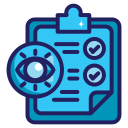Workshop Techniques That Unlock Insight
Invite participants to silently sketch user flows or screens, then converge by dot voting on hotspots. This surfaces diverse ideas before groupthink forms. Try it next session and report back on the most surprising sketch you saw.
Workshop Techniques That Unlock Insight
Build a journey map collaboratively, attaching screenshots, metrics, and quotes as evidence. Facts anchor opinions and uncover gaps. Post one metric you always pin to your maps, and why it changes requirement conversations.
Workshop Techniques That Unlock Insight
Use causal loop diagrams to visualize how a proposed requirement might create negative ripple effects. Seeing feedback loops early guides safer decisions. Share a loop you discovered that saved your roadmap from trouble.
Workshop Techniques That Unlock Insight
Lorem ipsum dolor sit amet, consectetur adipiscing elit. Ut elit tellus, luctus nec ullamcorper mattis, pulvinar dapibus leo.





